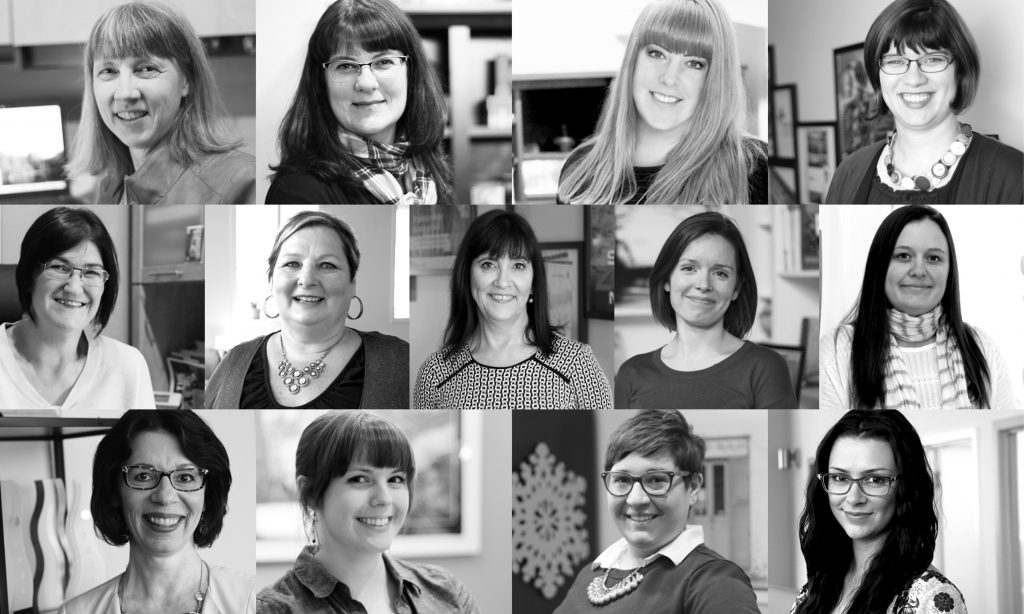
by pam | Jan 18, 2023 | Art of Change, Change, Life Transitions
What is the difference between a life change and a life transition? A life change is external and situational; something tangible such as a separation agreement or a “pink slip” when you lose a job. Whereas a life transition is internal and psychological. It is the internal work we do to reorient and readjust ourselves to our new external reality.[1]
Many of us do the life change but do not do what I call the “transition journey work”. When we only do the life change, we often keep repeating the same patterns in our lives and become frustrated and unfulfilled. An example is someone who consistently chooses new positions for the money without understanding and choosing based on their passions and what makes their soul sing. Another is someone who marries three, four or five times and after the initial honeymoon phase ends up in each relationship dealing with the same issues again and again and again, and either stays in the relationship and remains unhappy and unfulfilled or leaves and starts the process again.
The Benefits of doing the Internal Work
When we commit and take the time to do the internal psychological work and switch our beliefs and actions from resisting to embracing change, we no longer perceive change as a threat.
So how do you learn to embrace change and view it as a creative process that opens you up to new possibilities?
By understanding yourself and how you respond to change and why. And having a framework and tools to support you to navigate the journey.
The Art of Change Framework
Based on over 30 years of experience working with people and organizations in volatile environments including conflict zones, I created the “Art of Change Framework”. It is based on the metaphor “life is a dance” and underpinned by the belief that “embracing change is a creative process that opens us up to new possibilities.” Faced with yet another life transition, I decided to apply the “Art of Change Framework” to that transition and document the journey so I could share it with others.
On October 7, 2022, I had hip replacement surgery for my left hip. Due to osteoarthritis, I hardly had any cartilage left in it. That was the first major surgery I’d had.
My Transition Journey: Applying the “Art of Change Framework”
Step 1 – The first step in the “Art of Change Framework” is Shine the Light. This is where you explore how you respond to change and why.
Rate yourself on a scale from 1 to 10 in terms of how you typically respond to change “1” being “scares me to death” and “10” being “I thrive on it”. I rate myself as a “9” as I typically enjoy change and starting and experiencing new things. Perhaps you relate. The next activity is Rate yourself on a scale from 1 to 10 in terms of how you typically respond to a change that is imposed on you and that “comes out of the blue” such as when you receive a lay-off notice or when your partner says they no longer love you. I rate myself as a “6” on this scale.
Step 2 – Choose Your Dance – This is where you choose the transition you want to focus on, as it is preferable to focus on one transition at a time. The transition I’m choosing to focus on is my hip replacement surgery.
Step 3 – Feel the Rhythm and Learn the Steps – In this step you begin doing the work associated with where you are on your transition journey that includes: 1) an ending; 2) a neutral zone; and 3) a new beginning (adapted from the work of William Bridges). Each phase has work associated with it. The work associated with the ending is letting go and identifying lessons learned.
What did I have to let go of as part of my hip replacement surgery?
- Fear I had about “going under the knife”
- The emotions associated with grief; losing my once healthy hip, the one that had enabled me to run, jump, swim, hike … for all those years
- The belief that I had somehow caused my hip cartilage to deteriorate based on all of the track and field, running, and jumping and other sports I have done since my youth
- My independence as I had to let my partner and others support me during my recovery
- The ability to do activities I regularly do such as yoga, walking in nature, swimming, hiking …
- The belief that I’m getting old and as we age our health declines.
Step 4 – Practice, Practice, Practice – This step involves embracing change in your body and continuing to do the work associated with the phase of the transition journey you are in.
As part of the ending phase above, what lessons did I learn from the experience?
- Patience; I had to learn that recuperating from this type of surgery takes time; at least three to six months
- To reach out and ask for support
- To receive and be okay depending on the physical and emotional support of others
- What an amazing caregiver my partner Alan is
- I am challenged to sit still and not be physically active
- This provided me the opportunity to pause, reflect and take stock of my life and identify the many people and things I am grateful for
- I received the insight that as it was my left hip that was replaced, it is representative of my feminine side. Perhaps my new hip will have “amped up” my feminine energy and help me to spend more time in flow and move forward more quickly and easily without driving and striving.
The neutral zone is the phase between the ending and the new beginning. The work of this phase is to get clear and envision the life, relationship, career of your dreams. It provides an opportunity to create and visualize what your new life will look and feel like. This can also be a fearful place as you have “taken the leap”, are entering unknown territory, and you’re not sure what’s on the other side or whether there is a net to catch you.
I could have chosen not to go on the surgical wait list about a year ago, but after encouragement from my partner I said yes.
What will my new life look like? I see myself:
- playing with my grandkids, going up and down slides with them (including water slides), climbing on recreational equipment
- kayaking with my Sweetie, going on motorcycle rides, and feeling comfortable on the back of Alan’s motorbike
- awakening each day feeling whole, healthy and without pain
- hiking and walking with friends and family on a regular basis
- doing yoga three or more times a week
- believing that life continues to be an adventure to be lived to the fullest
Step 5 – Share Your Dance with the World – In this step, due to the positive ways you respond to change, you inspire and are a positive role model for others.
In Conclusion
Applying the “Art of Change Framework” to my recent hip replacement experience reaffirmed for me that the 5-step “Art of Change Framework” and process takes you on a journey that transforms you from resisting and fearing change to moving through personal and professional transitions with greater ease, grace, and playfulness, resulting in increased clarity and confidence.
If the “Art of Change Framework” resonates for you, I encourage you to apply it to your own personal and professional transitions. I welcome your comments and questions below.
[1] Bridges, William, Transitions; Making Sense of Life’s Changes. Cambridge: Da Capo Press, 2004.

by pam | Jan 20, 2021 | Benefits of being in nature, Change, Uncertainty
How has 2021 started for you?
Do you feel the past few weeks have been a blur? Did you hit the ground running and feel like you haven’t stopped?
Or, perhaps you started the year more tentatively, preferring to move slowly, doing what you know and feel comfortable with. Wanting all of the uncertainty, stress and sadness associated with 2020 to disappear.
It’s interesting how each of us deal with uncertainty. Some of us stay busy and don’t take time to slow down so we can’t think too much. Others take it slow, really feel their emotions and proceed cautiously. Which category do you fit into? Or are you somewhere in between; some days moving at top speed and others feeling emotional and moving more slowly?
I’m one of the folks who “hit the ground running” and feel like I’ve “had my roller blades on” since January 4th.
Yesterday my body felt tired and stressed. I felt “wound up”. I finally listened and went for a walk in nature. I walked to the ocean’s edge and lay on a rock, soaking up the winter sun and feeling the tension in my body melt away into the rock, or so it seemed.
“Nature connects me with my soul.” That’s part of a faith statement I developed at a personal growth workshop years ago. Nature is such a great teacher and healer. I’m amazed when I walk by water or in a park or forest how relaxed I begin to feel. My stress just falls away. Do you relate?
There is a lot of evidence regarding the healing benefits of nature. This was brought home to us during COVID-19 when we saw air and water pollution levels go down within the first 6 weeks of lock-down.
How are you dealing with this ongoing pandemic? Are you able to get out in nature? If so, I encourage it and when you’re there, notice how you feel. Perhaps journal about it afterward. After the year we’ve all had, it’s important to be kind to our bodies.
Thinking of you and sending much love and healing energy your way!

by pam | Feb 9, 2020 | Conscious Living, Entrepreneurship, Preventing Burnout, Self-Care, Stress Management, Women in Business
Did you end 2019
feeling exhausted and burnt out? Did you set the intention that this year would
be different, that you would take more time for you and to spend with friends
and family? Are you finding that already you are slipping back into old
patterns of taking work home in the evenings and working on weekends?
I understand. I’ve been there. Early in my childhood I
internalized the belief that in order to be loved and valued I needed to
perform and achieve. And so I kept doing that. Setting one goal, reaching it;
then raising the bar and striving for the next one. Taking very little, if any
time, between my accomplishments to celebrate; until I became exhausted and
burned out.
What happens when we
are driving and striving?
- Our agendas are packed
- We have little or no time for ourselves
- When we are speaking with someone, often half of
our brain is focused on them and the other half is focused on the next thing on
our to-do list
- We feel like there is so much to do and so
little time
- We focus on our goals and become so fixated on
achieving them that we may miss out on other opportunities that come our way
- We often feel tired on awakening
- We may start to feel resentful, as we seem to be
giving to everyone else, yet no one seems to be there to support us when we
need it.
Do you relate? Living this way, constantly driving and striving, leads to adrenal fatigue, burnout, various types of cancer, and auto-immune disorders such as fibromyalgia and multiple sclerosis (for more details on burnout and what to do about it – https://pamela-thompson.com/how-to-know-if-youre-burning-out-what-to-do-about-it/). When we work night and day, our bodies don’t have time to return to homeostasis where we relax and rejuvenate ourselves. As stress hormones constantly surge through us, our organs eventually burn out.
What does thriving
look and feel like?
- We feel happy, healthy and grounded with a balance
between “giving” and “receiving” and “doing” and “being”
- We feel open to possibilities
- We awaken feeling energized and excited about
the day ahead
- We spend time with people we care about
- We feel connected to something greater than
ourselves
- We spend regular time in nature
- We exercise regularly
- We are grateful for the life we have
- We are clear on our core values and live life in
alignment with them.
Feel free to add your own descriptions to the lists above.
How do we move from
driving and striving to thriving?
- We learn to Listen
to and trust in our body’s wisdom – The first step in getting out of our
heads and into our bodies is a mindfulness technique called body scanning. On awakening, you begin
scanning your body from the top of your head to the tips of your toes and
noticing where there is any tension or discomfort. Then you breathe into these
areas and set the intention to release any discomfort. Another mindfulness
practice is mindfulness walking meditations.
I encourage my clients to begin doing this 15 to 20 minutes a day, 3 times
a week. It can be done at noon or during a break. Instead of taking a walk and
thinking about the next thing on your plate or reflecting on a stressful
conversation you had with a partner or team member, you focus on your senses.
You feel the wind on your cheeks, you smell the salt sea air, you hear the
birds singing, you see the beautiful vistas surrounding you. When thoughts come
into your mind you view them as clouds floating by and let them pass, returning
to focusing on one of your senses. When you do this, notice what you notice
during the exercise, after and the cumulative effects.
- When you are feeling stressed, Take deep breaths in through your nose and
out through your mouth; making a sound as you breathe out. When you do this
3 or 4 times you release oxytocin, a hormone that relaxes you.
- Each week
block off in your calendar all of the things you commit to doing for yourself
(that you enjoy). For me one of these is yoga 3 times a week at noon. It
may be going to the gym 3 of 4 times a week after work. It may be meeting a
friend or partner for lunch once a week.
- Set firm
boundaries. Learn to say no. This is important at work, and with family and
friends.
- Notice
your energy levels and schedule your activities to capitalize on these. For
example, if possible, do your creative work when you are naturally more
creative. Schedule meetings after 10 am.
- Spend regular time in nature; walking, hiking, cycling, kayaking … . Nature is therapeutic. Based on several decades of research, the Japanese have evidence to show that forest bathing/walking among trees reduces your heart rate, reduces your blood pressure and increases the number of natural killer cells your body produces. For more on the benefits of being in nature check out: https://pamela-thompson.com/how-you-can-benefit-from-nature-why-its-important/
- Unplug
from technology for at least 24 hours one day a week (e.g. on weekends) if
possible
- Celebrate
your achievements, big and small.
It’s important to reach out for support to friends, family
or a coach, as moving from driving and striving to thriving, IS a journey and
it requires support from others.
For more practical tools and techniques to support you to be healthy, happy and grounded, I invite you to check out my book Learning to Dance with Life: A Guide for High Achieving Women – www.amazon.com/dp/B0145ZGDO2 that is backed up by evidence from neuroscience, eastern psychology and the health promoting and healing benefits of the arts. There is also a series of coaching questions woven throughout the book to support you to move from driving and striving to thriving.
I welcome strategies that you’ve found helpful in the comments below.

by PT-clc | Mar 29, 2019 | Change, Leadership, Managing Change, Stress Management, Uncategorized
As a changemaker, you are passionate about making a positive difference in the world. You may have chosen a career as a helping professional, work for a non-profit or an international development agency. You may be an academic doing research focusing on improving the health of women and children or you may be CEO of a socially-responsible company. Whatever line of work you’re in, you feel “called” to it.
One of the challenges of being a changemaker is that we experience much joy from giving and sometimes may overextend ourselves by sitting on a number of volunteer boards, or by continually pushing through fatigue to finish that one last thing, rather than taking a break and listening to our bodies. Do you relate?
I understand. I’ve almost burnt out several times in my life. When we continually push ourselves without listening to our bodies, we run the risk of experiencing adrenal fatigue or burnout. Dr. James Wilson in his book Adrenal Fatigue The 21st Century Stress Syndrome notes that:
“adrenal fatigue occurs when the amount
of stress [physical, psychological, emotional, infectious, environmental or a
combination of these] overextends the capacity of the body (mediated by the
adrenal [glands]) to compensate and recover from that stress or the combined
stresses. Once this capacity to cope and recover is exceeded, some form of
adrenal fatigue occurs. “ (p. 11)
While working in Afghanistan with the Ministry of Public Health, supporting them to develop their first strategic plan and building the capacity of internal teams to do planning, I got pneumonia twice within the first 6 months of living there. I recall being at the front of the room facilitating a national multi-stakeholder workshop with my team and feeling an incredible burning in my chest as I wrote on the flipchart. It wasn’t until I arrived home for a short break a week or so later and I felt really low in energy and on my husband’s suggestion I went to the doctor and was diagnosed with pneumonia the first time.
So how can you as a changemaker stay healthy, happy and grounded while making a positive difference in the world?
- Connect with and learn to listen to and trust in your body’s wisdom. Our bodies are amazing receivers and transmitters of information. They always let us know if something is wrong. Body scanning is an excellent tool when we wish to increase awareness of our body and the messages it sends us. Tara Brach in her book Radical Acceptance: Embracing Your Life with the Heart of Buddha, walks you through a detailed body scan and explains its power.
- Spend
regular time in nature. Go for a short walk at lunch or walk in the park
after work. Go for a hike with a partner, friend or family member. The Japanese
have done longitudinal research to show that when we walk among trees it
reduces our heart rate, reduces our blood pressure and increases the number of
natural killer cells our bodies produce (e.g. strengthens our immune system).
- Set
strong boundaries. If someone asks you to participate in a new community
activity (e.g. fundraise for a local charity) or add an extra project to your
already “full plate” at work, learn to say “no”. As givers we often say “yes”
without thinking about what we already have on our “to-do” lists. I encourage
you when asked to do something new, to take several deep breaths, go inside
your body and ask yourself the question: Will
this bring me joy? Do I really want to do this? Do I have time for this?
And if the answer is “no” practice saying “no” without feeling guilty.
- Get 7 to
8 hours of sleep per night. Sleep heals and replenishes our bodies.
- Unplug
from digital devices for 60 to 90 minutes before going to sleep. Artificial
light from screens increases alertness and suppresses the hormone melatonin by
up to 22% negatively affecting sleep, performance and mood. [1]
If you’d like to learn more proven strategies for preventing burnout and staying healthy, happy and grounded while living your passion I invite you to check out my #1 best selling book on Amazon Learning to Dance with Life: A Guide for High Achieving Women. FYI, men find it useful as well J. In the book I share 7 keys to what I call Creative Living. 7 keys to “consciously cultivating improved health, happiness, fulfillment and inner peace in your life.” Each key has powerful strategies and proven practices backed up by research from neuroscience, Eastern psychology and the health-promoting and healing benefits of the arts.
I’d love to hear from
you what strategies you’ve found useful to prevent burnout and reduce the
stress in your life. I welcome your comments and suggestions below.
[1] http://digitaldetox.org/manifesto/

by PT-clc | Mar 14, 2019 | Beliefs & Values, Change, Changemaker
As a heart-centered leader and/or changemaker, it is important to support others within your team and/or organization to embrace change. This may be easier said than done. Here are a few “tried and true” strategies.
- Openly
discuss upcoming changes; (e.g. new leadership, reorganization) and ask
people to share how they are feeling about the changes
- Communicate about the changes and openly discuss how they may impact you and your team
- Ask how
people would like to be supported during the change process. I so relate to
Brene Brown’s work, the examples she shares in “Dare to Lead”, and the
importance of scheduling “rumbling sessions” during times of uncertainty and change.
For example;
“These changes are coming hard and fast, and I know there is a lot of anxiety … I want to spend the next forty-five minutes rumbling about how we’re all managing the changes” (p. 35).
- Encourage
those team members who are uncomfortable with change to start slowly and
integrate small changes into their daily routines (e.g. drive to work a
different way, when dressing if they usually put their right leg into their
pants first, start with their left leg, try sleeping on the other side of the
bed … . Change is like a muscle; the more
you welcome change into your life, the easier it becomes. Ariane
de Bonvoisin in “The First 30 Days – Your Guide to Making Any Change Easier”
identifies six “change demons” and their antidotes. The six change demons are:
fear, doubt, blame, guilt, shame and impatience. She explains that the change
demons “help us navigate through change by alerting us if we are off course and
encouraging us to choose a different emotion to help us get where we want to
go.” (To learn more visit: https://pamela-thompson.com/can-reduce-fear-change-power-beliefs/)
- View embracing change as a creative process that opens us up to new possibilities (a foundational belief of my “Art of Change Framework”- https://pamela-thompson.com/2017/10/), and speak with your team about the value of internalizing this belief.
- Use the
change process as an opportunity to be creative and innovative and create
space and opportunities for team members to share innovative ideas. William and
Susan Bridges in their book “Managing Transitions: Making the Most of Change”
share some excellent examples of this.
I’d love to hear from you what strategies you’ve found effective to support others in your groups, teams and organizations to embrace change. I welcome your comments and ideas below.




